Package:
Data:
- A rasterStack with 10 bands.
- Each of the bands contains an image area surrounded by NAs
- Bands are logical, i.e. "1" for image data and "0"/NA for surrounding area
- The "image areas" of each band do not align completely with each other, though most have partial overlaps
Objective:
- Write a fast function that can return either a rasterLayer or cell numbers for each "zone", for instance a pixel containing data only from bands 1 and 2 falls in zone 1, a pixel containing data only from bands 3 and 4 falls in zone 2, etc. If a rasterLayer is returned, I need to be able to match the zone value with band numbers later.
First attempt:
# Possible band combinations
values = integer(0)
for(i in 1:nlayers(myraster)){
combs = combn(1:nlayers(myraster), i)
for(j in 1:ncol(combs)){
values = c(values, list(combs[,j]))
}
}
# Define the zone finding function
find_zones = function(bands){
# The intersection of the bands of interest
a = subset(myraster, 1)
values(a) = TRUE
for(i in bands){
a = a & myraster[[i]]
}
# Union of the remaining bands
b = subset(myraster, 1)
values(b) = FALSE
for(i in seq(1:nlayers(myraster))[-bands]){
b = b | myraster[[i]]
}
#plot(a & !b)
cells = Which(a & !b, cells=TRUE)
return(cells)
}
# Applying the function
results = lapply(values, find_zones)
My current function takes a very long time to execute. Can you think of a better way? Note that I don't simply want to know how many bands have data at each pixel, I also need to know which bands. The purpose of this is to process different the areas differently afterwards.
Note also that the real-life scenario is a 3000 x 3000 or more raster with potentially more than 10 bands.
EDIT
Some sample data consisting of 10 offset image areas:
# Sample data
library(raster)
for(i in 1:10) {
start_line = i*10*1000
end_line = 1000000 - 800*1000 - start_line
offset = i * 10
data = c(rep(0,start_line), rep(c(rep(0,offset), rep(1,800), rep(0,200-offset)), 800), rep(0, end_line))
current_layer = raster(nrows=1000, ncols=1000)
values(current_layer) = data
if(i == 1) {
myraster = stack(current_layer)
} else {
myraster = addLayer(myraster, current_layer)
}
}
NAvalue(myraster) = 0 # You may not want to do this depending on your solution...


